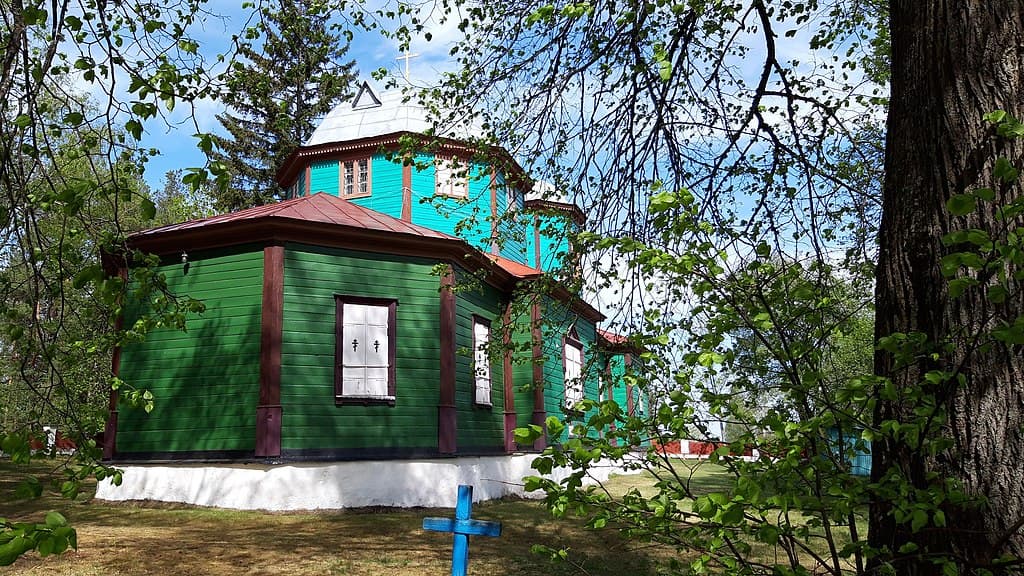Gorodok. The Church of Saints Cosma and Damian.
Church
Belarus, Mogilev region, Glussky district, Gorodok.
Description
The Orthodox Church of Saints Cosma and Damian is located in the village of Gorodok in the Glusk district. The temple was built in the early 19th century during the Russian Empire at the expense of the landowner Zhilinsky. The building was built according to the project of architect F. Sankovsky. During the 19th century, the church was renovated twice.
In Soviet times, the church was closed and the premises were turned over to a workshop. During the Great Patriotic War, the church was handed over to Orthodox believers, and it was no longer closed. This temple is a monument of wooden folk architecture. The church is active.
Categories
Historical
Architectural monument
Comments
Reviews to the Place
1Алег Дзьячкоу
11.03.2025
Gorodok. The Church of Cosma and Damian.
A wooden Orthodox church of Cosma and Damian was built in the village of Gorodok in the Glusk district. The town is located on the way from Glusk to the city of Bobruisk, on the banks of the Ptich river. The church was first mentioned in documents in the 17th century during the time of the Grand Duchy of Lithuania.
In 1814, during the Russian Empire, the landowner Zhilinsky financed the construction of a new church. The temple was built according to the project of architect Fyodor Sankovsky. It is believed that the church was built in honor of the war with the French in 1812. The landowner Zhilinsky was a participant in this war.
During the time of Emperor Alexander II, the temple building was renovated and rebuilt at the expense of the state treasury. A new house was built for the rector of the temple and church items were purchased for the temple. In 1864, the church owned 33 tithes of land. The profit for the year was 256 rubles. There were 1,052 women and 970 men in the congregation.
In 1884, the church was repaired again: the domes were redone and a new roof was made. In 1905, a fence and gates were erected around the church.
In Soviet times, in 1940, the temple was closed and the premises were turned over to a pottery workshop. During the Great Patriotic War, the church began to work again.
The church is a monument of wooden folk architecture with features of classicism.

._%C3%90%C2%A6%C3%90%C2%B0%C3%91%C2%80%C3%90%C2%BA%C3%90%C2%B2%C3%90%C2%B0_(01)-1741677550893.jpg&w=3840&q=75)
._%C3%90%C2%A6%C3%90%C2%B0%C3%91%C2%80%C3%90%C2%BA%C3%90%C2%B2%C3%90%C2%B0_(02)-1741677550811.jpg&w=3840&q=75)

